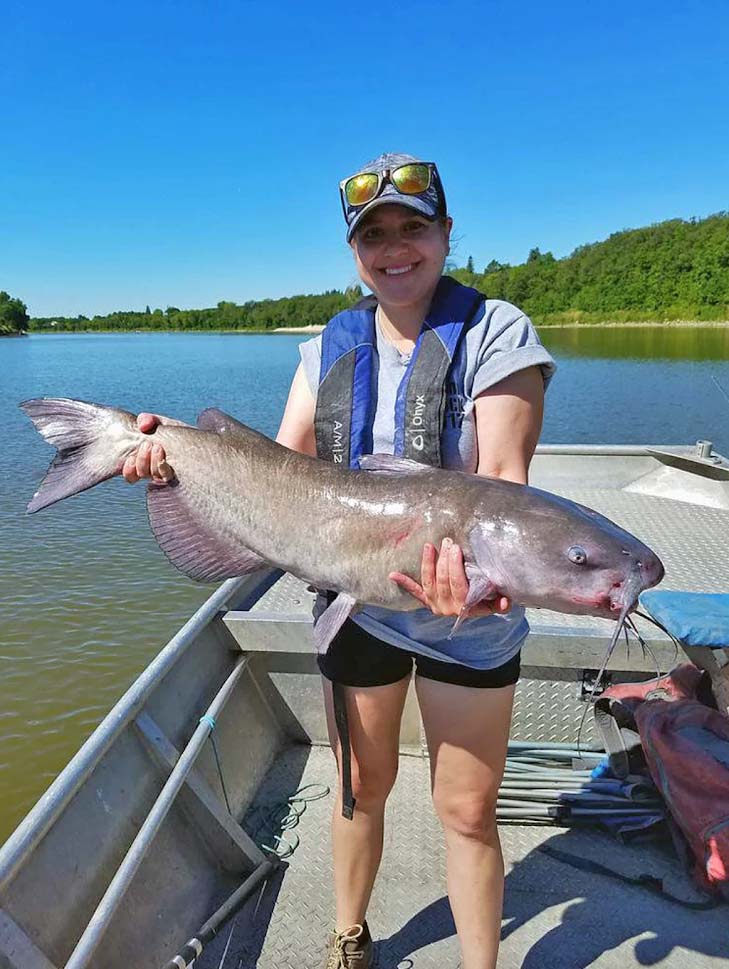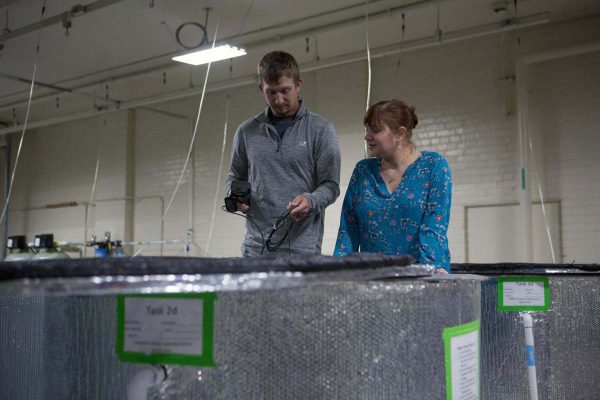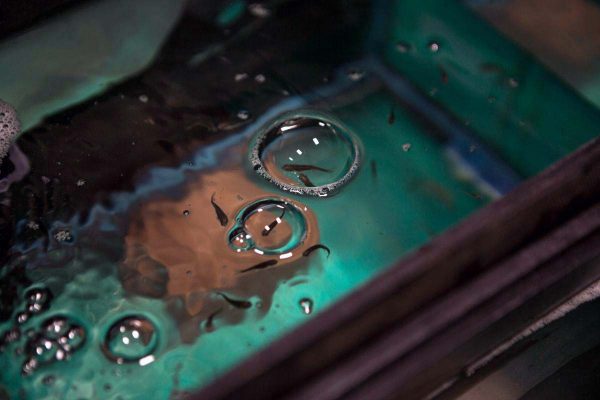New Fish Lab Offers Unique Opportunities

Dr. Jamilynn Poletto. (Credit: https://jpoletto2.wixsite.com/polettolab/jamilynn-poletto)
Sometimes scientists have to make an extraordinary effort to study the questions that concern them. In fact, they may even need to design and build labs to their specifications. This was the case with the University of Nebraska, Lincoln’s (UNL’s) Fish Conservation Behavior and Physiology Lab, which serves as a locus for research on water management best practices based on fish physiology—work conducted by up and coming scientists as well as more established researchers. Dr. Jamilynn Poletto spoke to EM about how the lab was built and the work that is happening there.
Building a customized solution
“My problem was that in the lab we get city water from Lincoln, and any water from any city in the country has chlorine and chloramine in it,” explains Dr. Poletto. “Those two things, the chlorine especially, are lethal to fish. We had to come up with a creative way to filter the chlorine and then come up with a way to deliver ‘clean’ water to the rest of the lab.”
Along with two graduate students, Zack Horstman and Alex Engel, Dr. Poletto built the unique lab by hand.
“We knew what we needed to do, so we went about building it ourselves,” details Dr. Poletto. “Building the lab took quite a while. We were on our hands and knees covered in PVC primer, PVC glue, plumbing things together. But now we’re actually able to get results.”
Starting with nothing much more than an empty concrete room and a unique set of goals meant building the lab from scratch—without a real instruction manual.
“I’m trained as a scientist,” remarks Dr. Poletto. “I study fish behavior and fish physiology, I don’t do plumbing and mechanics, but I had to learn it over time. I learned a bunch of this while I was getting my degree. In graduate school I did learn a bunch of this incidentally, but there was definitely a part of me while we were building the lab thinking, I’m not trained for this!”

Graduate student Zach Horstman and professor Jamilynn Poletto run tests on the water in the catfish holder at the fish research laboratory space on Tuesday, Sept. 25, 2018, in Lincoln, Nebraska. (Photo by Ann Milroy from The Daily Nebraskan)
However, Poletto and her graduate students each actually had backgrounds that allowed them to master the fish conservation lab build.
Engel and Horstman are both studying applied ecology. Engel has always wanted to work with fish, and both Engel and Horstman grew up fishing. This practical experience made the build easier and informed the team’s strategy.
“If you turn on the tap and go fill up your fish tank with water from the tap, that’s not going to work,” Dr. Poletto describes. “Our water source is continuously filtered. We have not one, but two activated carbon filters, and they fill the water that goes into our ‘clean’ thousand-gallon water reservoir. Our tanks, unfortunately, are recirculating, and we have three independent systems. The water goes into them, gets filtered, and then goes back into them. And part of the reason why that’s the case is that we can’t filter enough water.”
The recirculation tanks send water through a sand filter, a biofilter and a UV filter, and then they go back into the tanks. Dr. Poletto describes it as “a lot of machinery,” a necessary set up given that the system is speeding up a natural filtration process that, on its own, takes a very long time.
“There’s nothing like this lab in multiple states, actually,” remarks Dr. Poletto. “Now that the lab is built, we have the capacity now to study freshwater, saltwater, pretty much any fish. We have the infrastructure available for it.”
Unique educational opportunities
One of the most impressive things about the UNL’s Fish Conservation Behavior and Physiology Lab is the chance it is offering to students in the region.
“We have opportunities for tons of undergrads; we actually have five undergraduates working in our lab right now,” Dr. Poletto details. “That’s part of my goal. I want undergraduates in the lab to get the experience and see what this is like. I really like teaching, and I hope that I can provide opportunities for undergraduates to see what working in the field is like before they go to grad school, and if they choose to I want them to have experience so that they’re more marketable. I want them to be able to say that they’ve worked in this unique lab for the past year, and hopefully that will help them get their job.”

Minnows swim in the holding tanks at the fish research laboratory space on Tuesday, Sept. 25, 2018, in Lincoln, Nebraska. (Photo by Ann Milroy from The Daily Nebraskan)
Along these lines, there are several exciting studies in progress in the new lab, conducted both by Dr. Poletto and students.
“One current project is looking at the effect of temperature on how quickly and how completely a fish can digest their food, which sounds very odd but it’s really important,” comments Dr. Poletto. “In the plains region, there are multiple species of catfish. Some are doing really well in terms of the population numbers, and some are not. The species we’re looking at is not doing well, and the question is, why? So we’re looking at whether they are able to digest their food at a proper rate or not, and whether that might contribute to their lower population numbers.”
In the lab, the team keeps the fish at three different temperatures and monitors them on video to get a better sense of when they eat.
“We’re able to say, okay, this one ate 8 hours ago versus 12 hours ago versus three hours ago,” remarks Dr. Poletto. “Then we’re able to look at their stomach contents at all of those different timeframes and say, okay, how much have they digested? So we can get a really good understanding of how long it takes them to process even a single food item.”
The lab team also tests how various contaminants affect fish physiology and health.
“Another project we’re doing, which is among those I’m most excited about, is looking at what the effects of a pesticide on thermal tolerance are,” Dr. Poletto describes. “Basically, if you add some really intense stressor like a pesticide into the system, does that actually affect your ability to handle other things? Does that affect your ability to handle temperature, for example?”
These kinds of projects are exactly what Dr. Poletto hopes to see more of in the future.
“I would love to be able to host a bunch of different graduate students and undergrad students,” states Dr. Poletto. “To me, the future of a lab is people being able to use it. I mean we spent so much time building it; I want it to be used.”
“There is nothing up like this, pretty much anywhere,” adds Dr. Poletto. “Honestly, this is one of the only experimental facilities in five or six states. So I am really encouraging people to come and use it.”
Top image: Dr. Jamilynn Poletto. (Credit: https://jpoletto2.wixsite.com/polettolab/jamilynn-poletto)




0 comments